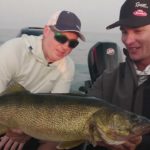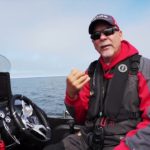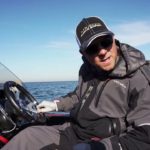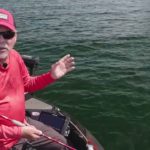The Mighty Missouri is Alive and Well
Tourism officials along the Missouri River in South Dakota feel much the same way Mark Twain must have felt when he heard rumors he was about to die. “Reports of my death are greatly exaggerated,” Twain wrote to the newspaper editors who dispatched a reporter to check on his health.
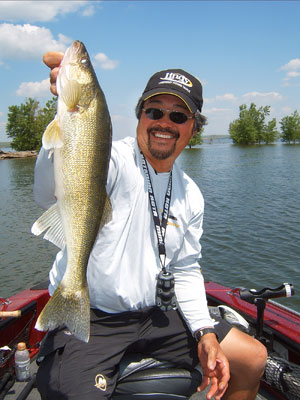 Turn the clock forward to now, when media reports inaccurately paint a picture that fishing is dead for 2011 on the Missouri River and its reservoirs due to extensive flooding. The truth is far different. Those who say the situation is hell and high water don’t understand how great the fishing can be on high reservoirs… that is, if you are prepared.
Turn the clock forward to now, when media reports inaccurately paint a picture that fishing is dead for 2011 on the Missouri River and its reservoirs due to extensive flooding. The truth is far different. Those who say the situation is hell and high water don’t understand how great the fishing can be on high reservoirs… that is, if you are prepared.
“There is a perception with the flooding that there are no recreational opportunities available, but the fishing has been fantastic this year,” said Chuck Schlueter, communications manager for the South Dakota Game, Fish & Parks Division of Wildlife.
“Fishing has been unbelievable,” added guide Cary Storey of Thunderstik Lodge at Chamberlain on Lake Francis Case. “We’re excited about the quality fishery we have in our area.” It’s a fact, fishing has been excellent, particularly for walleyes. The sizes and numbers have been better than ever. But, as Schlueter pointed out, the white bass, smallmouth bass, northern pike, catfish and panfish also have been biting in good numbers, too.
It’s an important story to deliver as anglers plan fall fishing trips.
And the worries that high water might cause a replay of 1997 – when huge quantities of forage fish were drained out of Lake Oahe – are unfounded, Schlueter said. In 1997, the thermocline at the dam had set up at the exact depth where fish were vulnerable to a rush of current – precisely the time the flood gates were opened.
This year, the flooding occurred earlier and in such a way that game fish and forage should have been able to adapt to the rising water. A true picture of what has occurred will come to light during the 2012 spring fishing census, he said.
Meanwhile, the anecdotal evidence is coming from numerous anglers who say they are catching limits of good fish ranging from big walleyes to many younger ones just over the 15-inch legal limit.
Mighty Mo at High Pool
For anglers who have fished the Missouri River in recent years, they know that low water is more the norm. Five years ago, water levels were so low that state fisheries workers were hustling to provide temporary extensions to boat ramps so people could reach the water. But this year, high water has occurred from Montana to Missouri after a heavy snow melt combined with heavier-than-average spring rains. The U.S. Army Corps of Engineers has used the system of dams and reservoirs to control water flow in order to limit the damage downstream.
“The Corps would call it a controlled flood,” Schlueter said. “We didn’t get the disastrous high water event, but we got a prolonged event.”
Some ramps have had to close, with some parks having to be abandoned due to the extraordinary high water. Unfortunately, a few towns along the river with low-lying neighborhoods were flooded. Boat restrictions, including speed limits to avoid debris and no-wake zones, were put in place. But the fishing continued to be good for those who did launch.
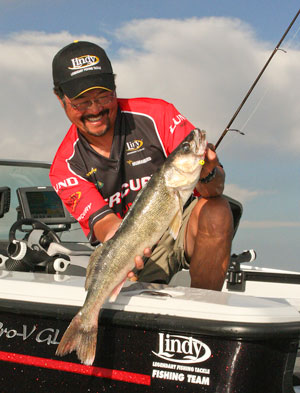 High water is anticipated to continue during the fall as the Corps will release less water and slowly drop the reservoirs to lower levels. Anglers can expect good fishing throughout the latter part of 2011.
High water is anticipated to continue during the fall as the Corps will release less water and slowly drop the reservoirs to lower levels. Anglers can expect good fishing throughout the latter part of 2011.
At times, high water in rivers and reservoirs can be a good thing. Schlueter added that newly flooded vegetation and other habitat provides hiding places for young of the year fish, so survival rates soar. A great year class of walleyes and other species on top of the good populations that existed previously could mean great fishing for several years to come. “With a good spawn this year, it bodes well for a great future,” Schlueter said.
Even though fishing is excellent, walleye anglers may be intimidated by the huge expanses of water they face on massive reservoirs like Oahe and Sharpe. But the principles of finding fish are the same, and high water can actually help concentrate fish. Always keep the approach as simple as can be.
Finding High-Water Walleyes
Get a map of the lake and remember the basics. In reservoirs, fish will be on or near points that touch the deepest water, next to the old river and creek channels. Of those points, the most fish will be on the structure that has the most character. This means those points which have some cover such as rocks, vegetation, wood or a combination of all. In western reservoirs, flooded tree tops are also very important. In fall expect to find walleyes on points and flats closer to the dams.
Get the latest information from posts on web sites before you pack and check out the bait shops on the way to launch. They’ll have the best data. Have the staff mark maps with productive locations. Compare the data to your own predictions on where fish will be.
Don’t leave without asking for suggestions on tactics and bait. Trolling will likely be the best method to eliminate water and locate walleyes. Expect to rig with bottom-bouncers and live bait or troll crankbaits. The latter can be an expensive way to go. Lures can be lost to snags in trees, but this technique is extremely productive.
Once you’re on the water, motor to points and cruise around looking for fish. Keep moving until you see them on the sonar. Expect fish to be closer to shore than normal. That’s where they’ll find the submerged trees and/or vegetation.
If you prefer slow trolling bottom-bouncers, two terminal presentations will work best. Use crawler harnesses or a plain Lindy Rig snell/hook tipped with a nightcrawler. Vary your trolling speeds between 1 to 1.5 mph. Make S turns to speed up and slow down your bait. Outside bouncers travel faster on the turn. Inside ones drop and move slower. Use your GPS to mark fish and take note of which rod they come on so you can adjust the speed to match what they want.
Your crankbait choice can include Bomber 24A’s, Lindy Shadlings, or Wally Divers. Use leadcore line for deep shoreline flats or tree tops. Use a super braided line, like TUF-Line, for your leader, to boost the odds of retrieving lures from snags. You can cover more water with crankbaits, which you should troll at 2 – 2.5 mph. Target the baits to run 6 inches to a foot above the bottom or just over the top and amongst the highest branches of the trees.
Check out the Missouri River system for a place to go. High water doesn’t have to be a downer. The fish are biting!
For additional information on which boat ramps and campsite are open in South Dakota, check out: http://gfp.sd.gov/state-parks/missouri-river-flood.aspx.


